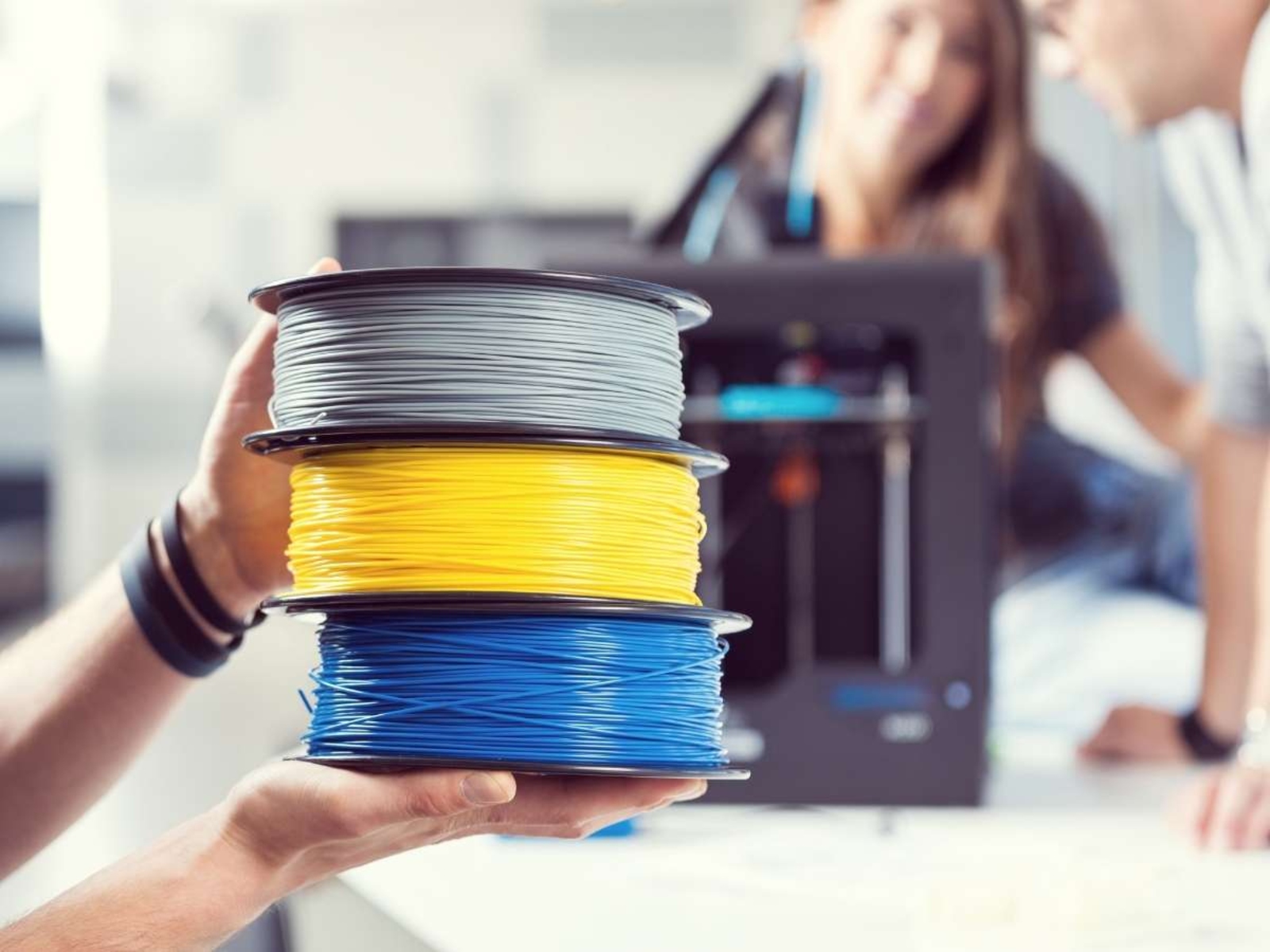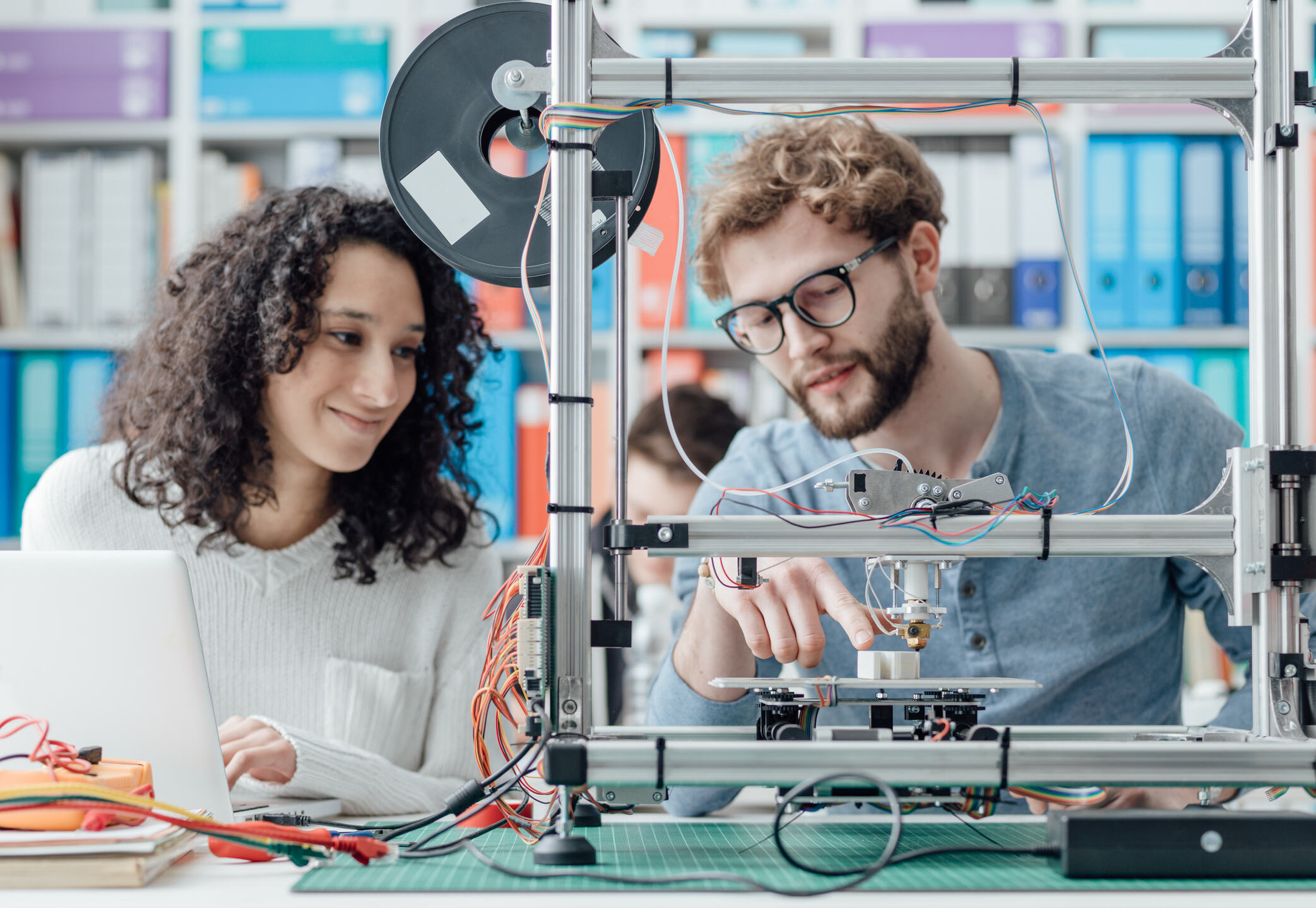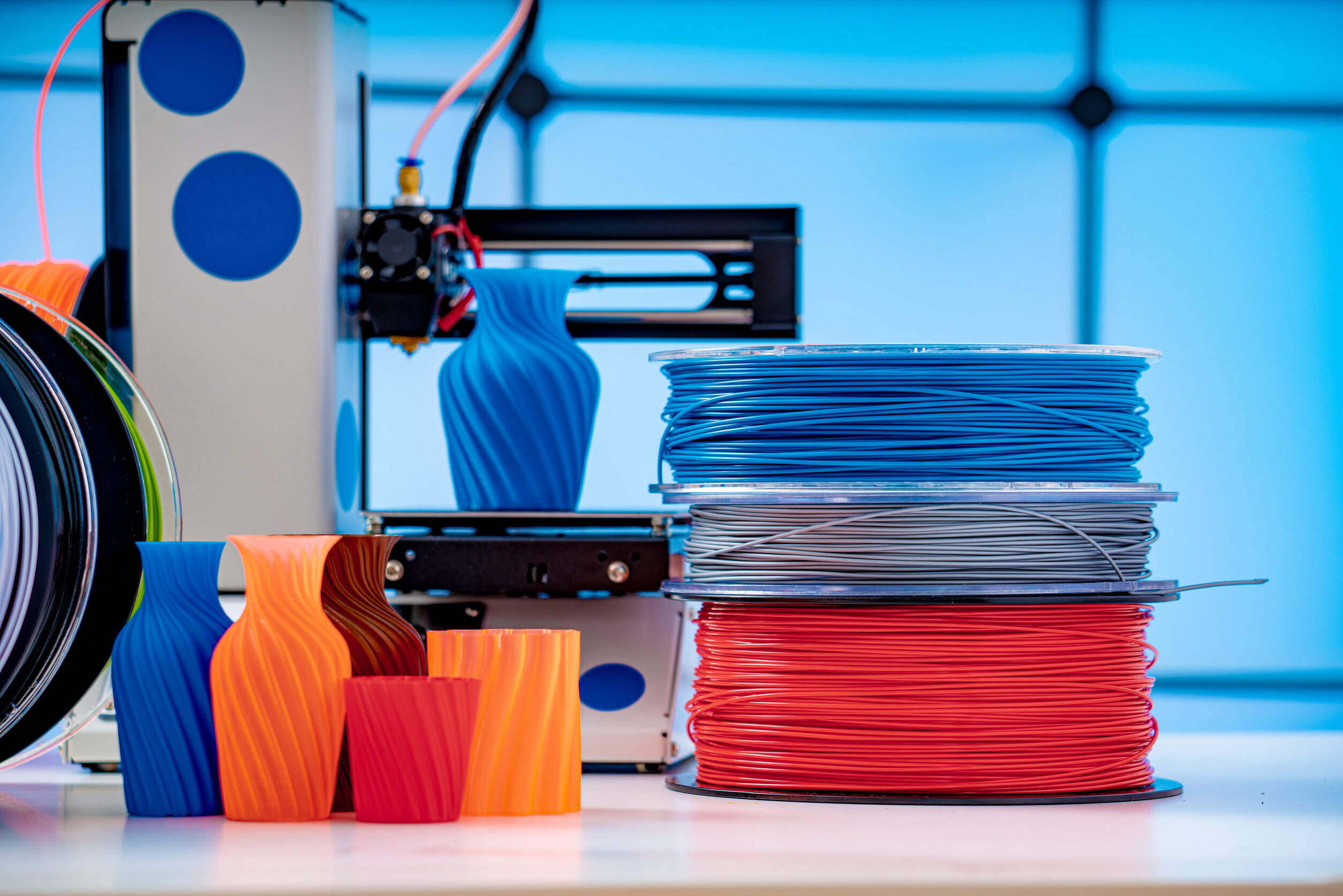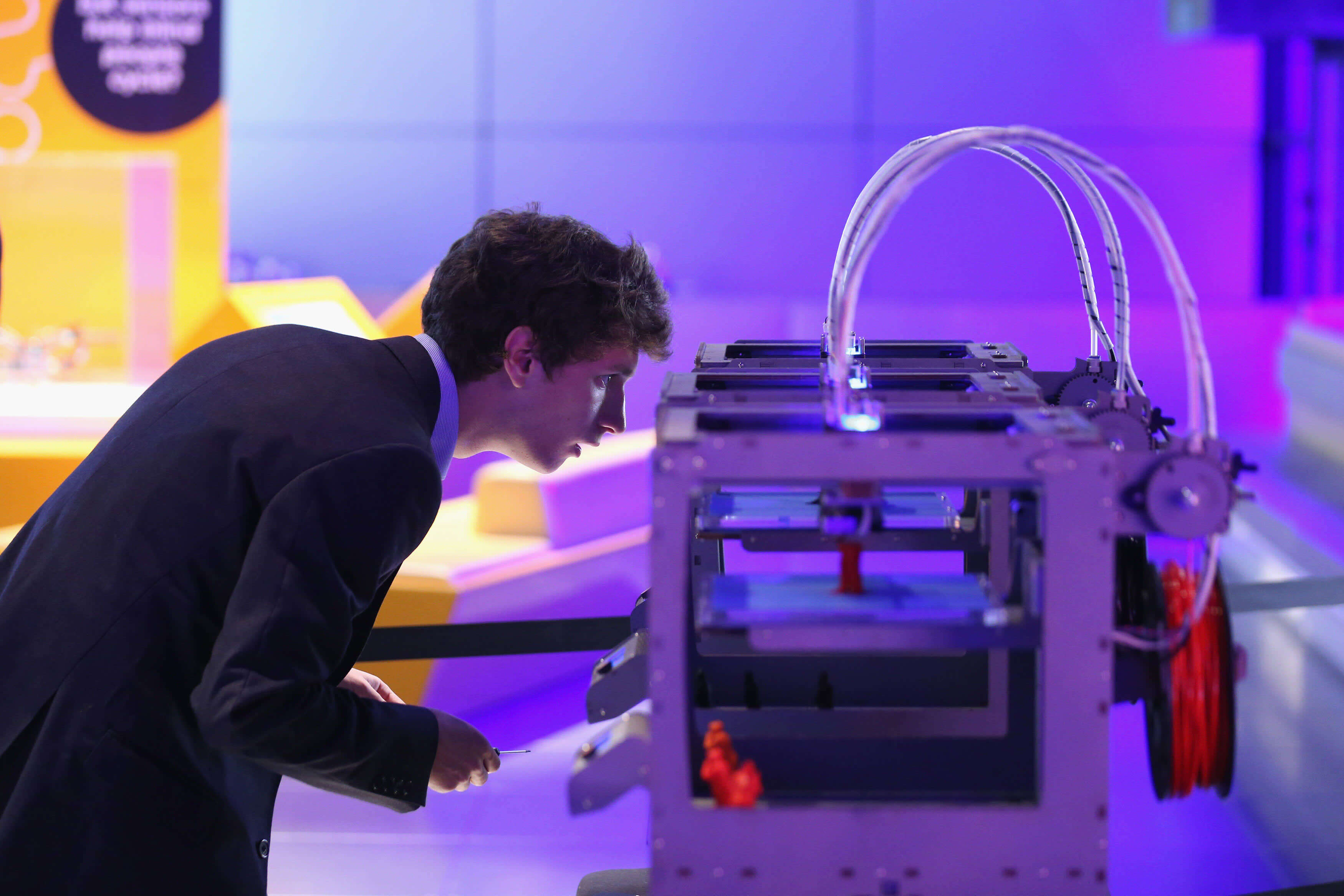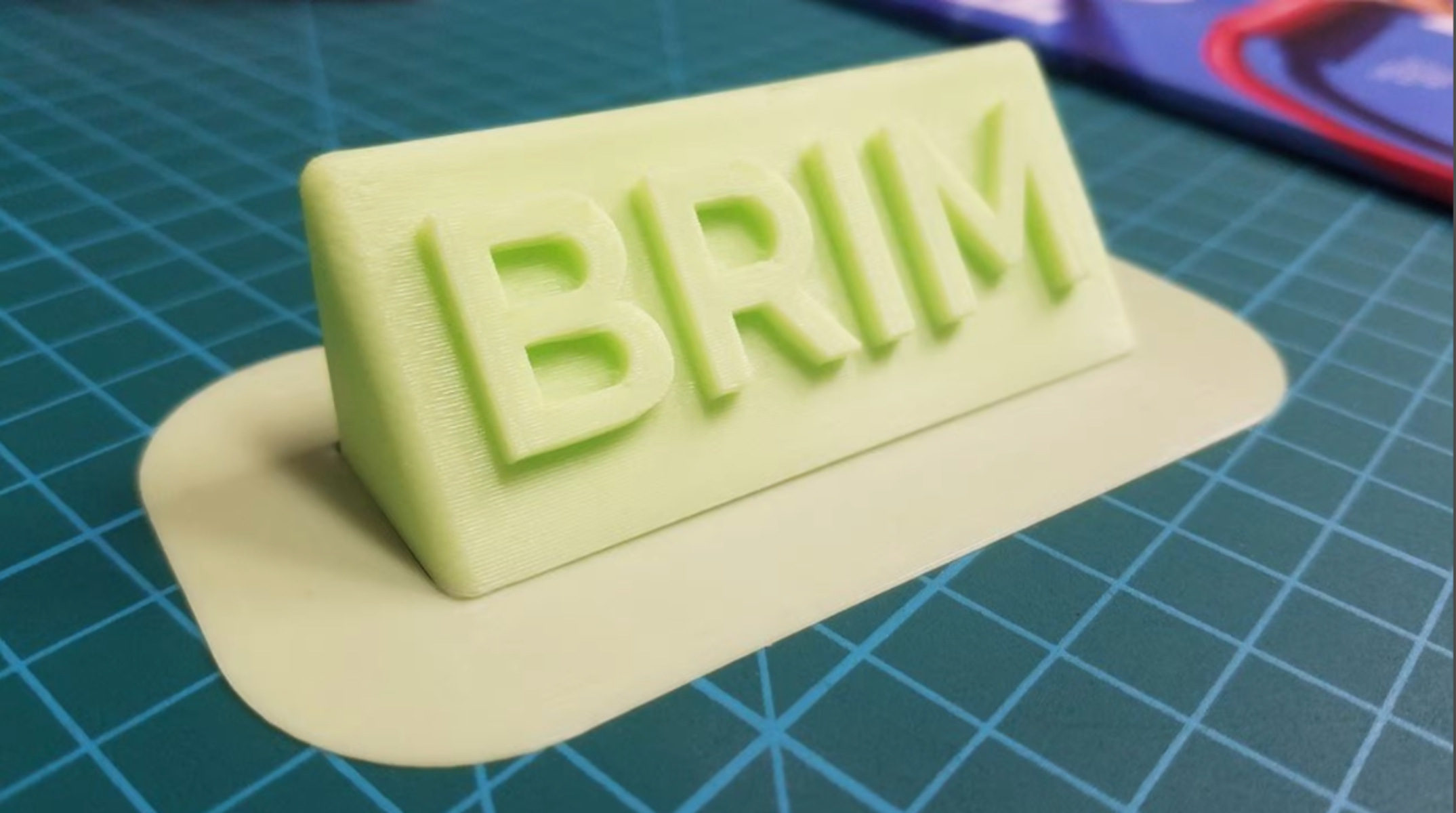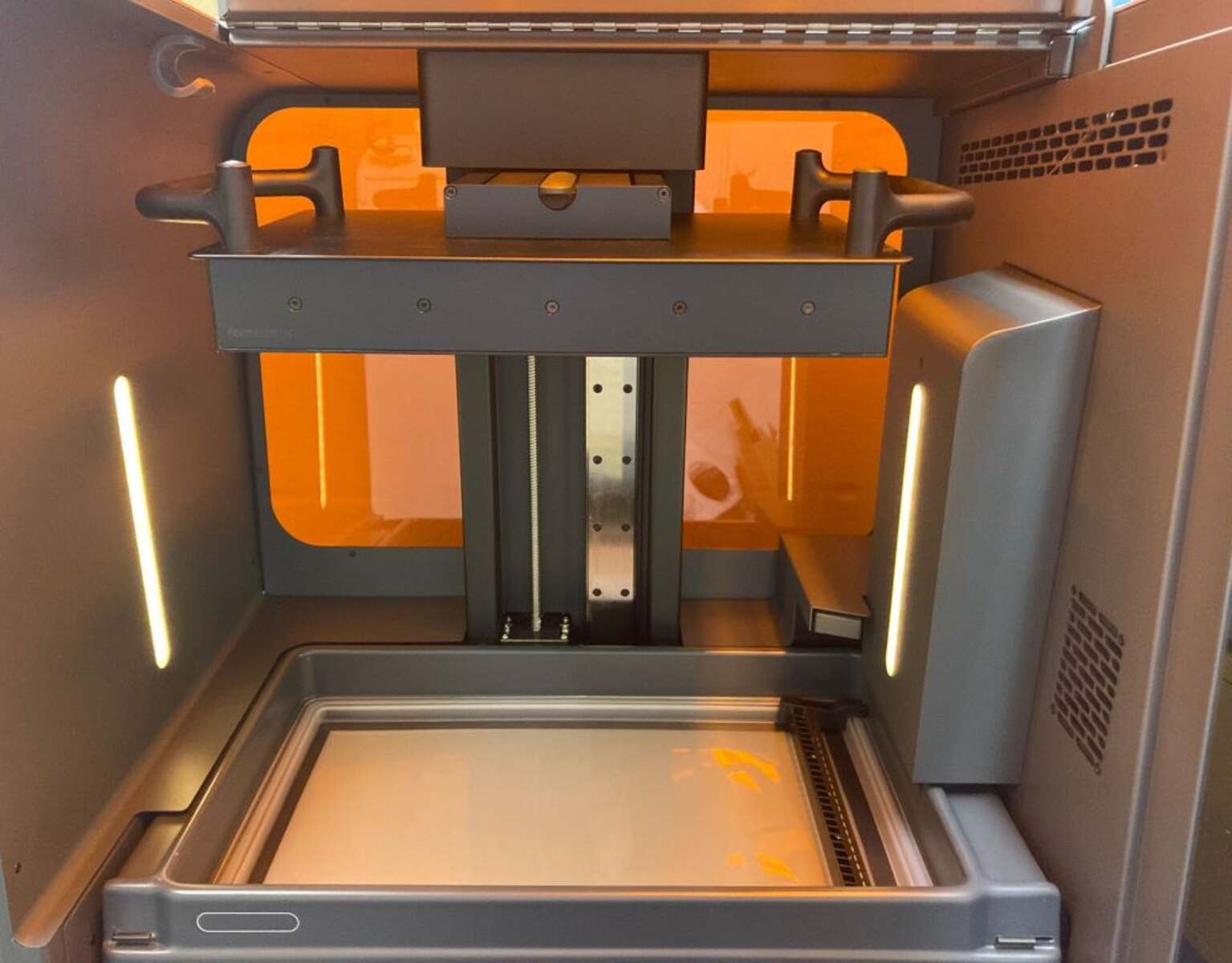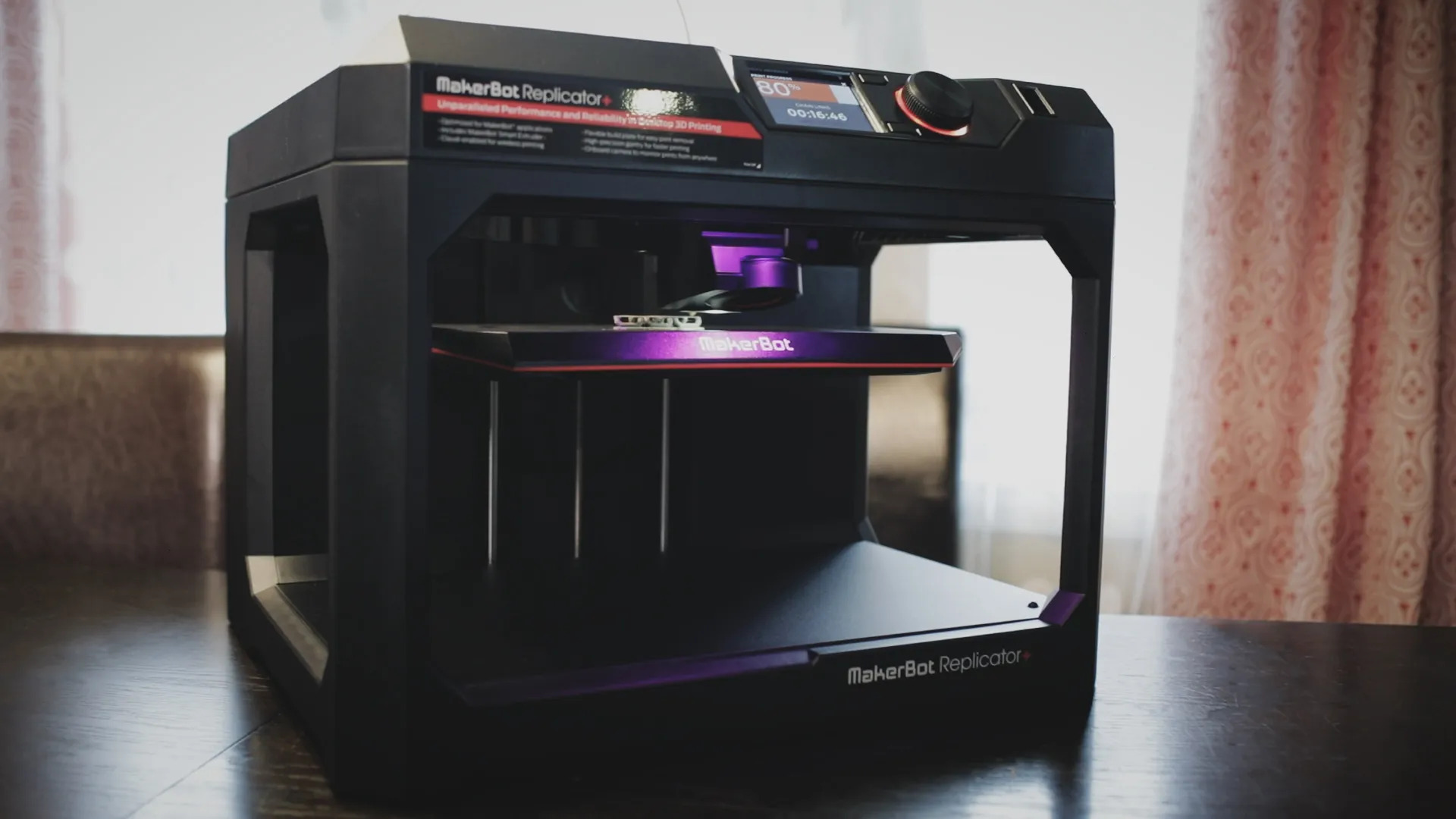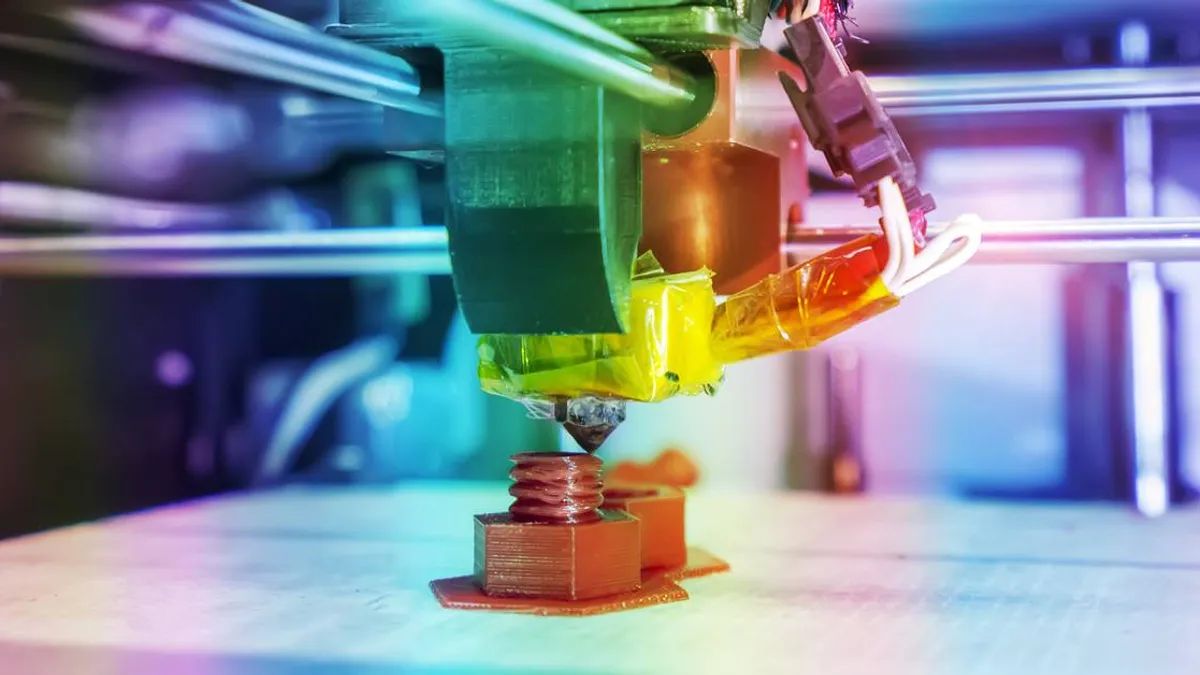Introduction
Welcome to the world of 3D printing! Over the years, 3D printing technology has revolutionized the manufacturing industry, allowing for the creation of complex and intricate objects with ease. One of the key factors that contribute to the success of 3D printing is the choice of materials used. The material used in the 3D printing process plays a crucial role in determining the strength, durability, and overall quality of the final printed object.
In this article, we will explore some of the most commonly used materials in 3D printing and their unique properties. From PLA to metal filaments, each material has its own advantages and limitations, making it suitable for different types of applications and projects.
Before we dive into the details of each material, it’s important to note that the choice of material depends on various factors such as the desired strength, flexibility, heat resistance, and even the aesthetic properties of the printed object. Understanding the characteristics of different materials will help you make an informed decision when selecting the best material for your specific needs.
So, whether you’re a professional in the industry or just an enthusiast exploring the possibilities of 3D printing, let’s take a closer look at the materials used to bring your ideas to life!
PLA (Polylactic Acid)
PLA, or Polylactic Acid, is one of the most commonly used materials in 3D printing. It is a biodegradable thermoplastic made from renewable sources such as corn starch or sugarcane. PLA has gained popularity due to its ease of use, affordable price, and wide availability.
One of the key advantages of PLA is its ease of printing. It has a low printing temperature compared to other materials, which means it requires less energy and is less prone to warping or nozzle clogging. This makes it ideal for beginners or those who are new to 3D printing.
Additionally, PLA offers good print detail and smooth surface finish, making it suitable for a wide range of applications. Its vibrant and glossy appearance makes it a popular choice for aesthetic prints, such as prototypes, figurines, or architectural models.
Another important characteristic of PLA is its biodegradability. Unlike other plastics that take hundreds of years to decompose, PLA is compostable, which means it can break down into non-toxic elements under the right conditions. This eco-friendly aspect of PLA makes it a favorable choice for environmentally conscious individuals or projects.
However, it’s important to consider that PLA does have some limitations. It is not as heat-resistant as some other materials, which means it may deform or soften when exposed to high temperatures. As a result, PLA is not recommended for applications that require heat resistance.
Overall, PLA is a versatile material that offers ease of use, affordability, and biodegradability. Its wide availability and vibrant colors make it a popular choice for 3D printing enthusiasts and professionals alike.
ABS (Acrylonitrile Butadiene Styrene)
ABS, short for Acrylonitrile Butadiene Styrene, is another commonly used material in 3D printing. It is a thermoplastic polymer known for its strength, durability, and versatility.
One of the main advantages of ABS is its excellent mechanical properties. It is a tough and impact-resistant material, making it suitable for functional parts and prototypes that require strength and durability. ABS is often used in applications such as automotive parts, household appliances, and protective cases.
In addition to its strength, ABS has good heat resistance, allowing printed objects to withstand higher temperatures without deforming or melting. This makes it a preferred material for parts that come in contact with heat or require post-processing techniques like polishing or vapor smoothing.
ABS is also known for its ability to be easily post-processed. It can be sanded, glued, and painted, allowing for further customization and refinement of printed objects. This makes ABS a popular choice for those who desire a fine-tuned finish or want to incorporate additional detail to their prints.
However, there are a few considerations when working with ABS. It requires a higher printing temperature compared to other materials, which means the printer must be able to reach and maintain these higher temperatures. Additionally, proper ventilation is important when printing with ABS, as it emits low levels of fumes that may be unpleasant or harmful if inhaled.
When it comes to choosing between PLA and ABS, ABS is often favored for its durability and mechanical properties. However, it may not be as beginner-friendly as PLA due to the higher printing temperature and the need for proper ventilation. Nonetheless, ABS remains a popular choice for functional prints that require strength, heat resistance, and post-processing capabilities.
PETG (Polyethylene Terephthalate Glycol)
PETG, which stands for Polyethylene Terephthalate Glycol, is a versatile and popular material used in 3D printing. It combines the best properties of both PLA and ABS, making it a fantastic choice for a wide range of applications.
One of the main advantages of PETG is its strength and durability. It has good impact resistance and can withstand bending, making it ideal for functional parts that require toughness, such as mechanical components, containers, or even protective gear. PETG also has a high melting temperature, which means it can tolerate higher temperatures without warping or deforming.
In addition to its strength, PETG offers excellent layer adhesion, resulting in strong and reliable prints. This enables the creation of larger, more complex objects with ease, as PETG exhibits minimal warping or cracking during the printing process.
Another noteworthy characteristic of PETG is its transparency and clarity. Compared to PLA and ABS, PETG has a higher level of transparency, making it suitable for objects that require optical clarity, such as light diffusers or display cases.
PETG also has good chemical resistance, making it resistant to common solvents and chemicals. This property makes PETG a preferred choice for objects that may come into contact with liquids or harsh environments.
Furthermore, PETG is considered food-safe and is approved by agencies such as the FDA for certain applications. It can be used to create food containers, utensils, or other objects that need to meet specific health and safety requirements.
When it comes to printing PETG, it is important to note that it requires higher printing temperatures compared to PLA. It also benefits from a heated bed and enclosed print chamber to minimize warping and ensure optimal print quality. Additionally, it may be slightly more challenging to achieve fine details with PETG compared to PLA due to its higher viscosity.
Overall, PETG is a versatile material that offers a balance between the strength and durability of ABS and the ease of use of PLA. With its excellent layer adhesion, transparency, and chemical resistance, PETG is a popular choice for a wide range of 3D printing applications.
Nylon
Nylon is a popular material in the world of 3D printing, known for its strength, versatility, and durability. It is a thermoplastic that offers a unique set of properties that make it suitable for a wide range of applications.
One of the main advantages of nylon is its exceptional strength and toughness. It is a highly durable material that can withstand significant impact and stress, making it suitable for functional prototypes, tools, and parts that require high strength. Nylon also has a high melting point, allowing it to withstand heat better than some other materials.
In addition to its strength, nylon is known for its excellent flexibility and resistance to wear and tear. It has a certain level of elasticity, which allows it to bend and flex without breaking. This makes it an ideal choice for applications that require parts with tight tolerances or complex geometries.
Furthermore, nylon has good chemical resistance, making it resistant to solvents and chemicals. This property makes it suitable for applications that involve exposure to harsh environments or contact with certain substances.
Nylon is also valued for its low friction coefficient and high dimensional stability. It provides smooth and frictionless movement, making it suitable for gears, bearings, and other moving parts. Its high dimensional stability ensures accurate and consistent printing, resulting in precise and reliable prints.
On the downside, printing with nylon can be more challenging compared to other materials. Nylon tends to absorb moisture from the air, which can cause printing issues such as warping or poor layer adhesion. To overcome this, proper drying and storage of nylon filament are essential to ensure optimal printing conditions.
Moreover, nylon requires higher printing temperatures and benefits from a heated print bed. It is recommended to use a printer with good temperature control and ventilation when working with nylon to achieve the best results.
Overall, nylon is a versatile material that brings strength, flexibility, and durability to 3D printed objects. With its excellent mechanical properties and resistance to wear and tear, nylon is a popular choice for functional prototypes, mechanical components, and parts that require high strength and flexibility.
TPU (Thermoplastic Polyurethane)
TPU, or Thermoplastic Polyurethane, is a flexible and versatile material widely used in 3D printing. It offers a unique combination of properties, including flexibility, durability, and excellent elasticity.
One of the main advantages of TPU is its exceptional flexibility. It has a high elongation at break, allowing it to stretch significantly without breaking. This makes TPU a fantastic choice for objects that require elasticity and impact resistance, such as phone cases, shoe soles, or gaskets.
In addition to its flexibility, TPU exhibits good abrasion resistance, making it suitable for applications that involve friction or repeated wear. It can withstand constant bending and twisting without any significant loss in performance or structural integrity.
An important characteristic of TPU is its strong interlayer adhesion, which results in reliable and durable prints. This makes it easy to achieve high-quality, flexible prints without worrying about delamination or weak layers.
Furthermore, TPU has excellent chemical resistance, making it resistant to many common solvents and chemicals. This property allows it to be used in applications involving contact with oils, greases, or other substances that may degrade or corrode other materials.
When it comes to printing with TPU, it’s important to note that it requires some considerations. TPU has a higher printing temperature compared to PLA or ABS, typically in the range of 210-230°C. It also benefits from a slower print speed and a heated print bed to ensure proper adhesion and prevent warping.
Additionally, TPU is more susceptible to stringing or oozing during the printing process, so optimizing retraction settings and print cooling can help minimize these issues and achieve cleaner prints.
Overall, TPU is a versatile material that brings flexibility, durability, and elasticity to 3D printed objects. With its excellent interlayer adhesion and resistance to impact and abrasion, TPU is an ideal choice for applications that require flexibility and durability.
HIPS (High Impact Polystyrene)
HIPS, or High Impact Polystyrene, is a popular material in the world of 3D printing known for its versatility, affordability, and ease of use. It is a thermoplastic that offers a range of benefits for various applications.
One of the main advantages of HIPS is its excellent impact resistance. HIPS is known for its toughness and ability to withstand impacts and rough handling without breaking or shattering. This makes it an ideal choice for functional prototypes, models, or parts that require durability and strength.
In addition to its impact resistance, HIPS is lightweight and relatively easy to print. It has a low melting point and can be easily extruded, making it compatible with most 3D printers. Its ease of use and compatibility with other materials, such as ABS, make it a popular choice for dual-extrusion prints and support structures.
Another advantage of HIPS is its ease of post-processing. It can be easily sanded, glued, and painted, allowing for additional customization and refinement of printed objects. This versatility makes HIPS suitable for a wide range of applications, from architectural models to functional prototypes.
Additionally, HIPS has good dimensional stability, meaning the printed object retains its shape and size even under temperature variations. This ensures consistent and accurate prints without warping or distortion, contributing to the overall quality of the final printed object.
When printing with HIPS, it’s important to note that it requires a heated print bed to ensure adhesion and minimize warping. However, HIPS is more prone to shrinkage compared to other materials, so proper calibration and leveling of the print bed are crucial for successful prints.
Furthermore, HIPS is soluble in Limonene, which is a common solvent. This property makes it an excellent choice for creating support structures that can be easily dissolved, leaving behind a clean and smooth surface on the final printed object.
Overall, HIPS is a versatile material that combines durability, ease of use, and compatibility with other materials. With its excellent impact resistance and post-processing capabilities, HIPS is a popular choice for functional and structural prints, as well as for creating soluble support structures.
PVA (Polyvinyl Alcohol)
PVA, or Polyvinyl Alcohol, is a water-soluble material widely used in 3D printing as a support material. It offers unique characteristics that make it an excellent choice for creating complex models and prints with intricate details.
One of the main advantages of PVA is its excellent solubility in water. This property allows PVA support structures to be easily dissolved after the printing process, leaving behind a clean and smooth surface on the final printed object. This is particularly useful for prints with overhangs, bridges, or intricate geometries that would be challenging to print with other materials or support structures.
Additionally, PVA is known for its good adhesion to other filaments, such as PLA or ABS, making it compatible with dual-extruder printers. This means that PVA can be used to create support structures for prints that require different materials, enhancing the overall design flexibility.
PVA is also easy to handle and print. It has low shrinkage, which means that it maintains its dimensions throughout the printing process, ensuring accuracy and consistency. It can be dissolved in water at room temperature, making the post-processing of prints straightforward and convenient.
Moreover, PVA offers good printability and layer adhesion, resulting in reliable and stable support structures. It allows for smooth and clean separation from the printed object without leaving any residue or marks, ensuring a satisfying finish on the final print.
However, it’s important to note that PVA has some considerations when printing with it. It is sensitive to moisture and can absorb humidity from the air, causing it to degrade or become less effective as a support material. Therefore, it is essential to store PVA filament in a dry environment and use it promptly to maintain its quality.
Furthermore, PVA has limited mechanical strength and is not suitable for functional parts or models that require durability. Its primary purpose is to provide support during the printing process and facilitate the creation of complex prints with ease.
In summary, PVA is a water-soluble material that serves as an excellent support structure in 3D printing. With its easy solubility, compatibility with various filaments, and clean separation from the final print, PVA allows for the creation of intricate and complex designs with smooth, detailed surfaces.
Metal Filaments
Metal filaments have gained popularity in the world of 3D printing as they offer the ability to create objects with the look and feel of real metal. These filaments are composed of a combination of metal particles and a binding polymer, providing a unique opportunity to print objects that resemble various metals.
One of the main advantages of metal filaments is the aesthetic appeal they bring to 3D printed objects. With the ability to mimic metals such as bronze, copper, stainless steel, or even gold, these filaments can give your prints a metallic finish, making them suitable for artistic applications, jewelry, or decorative items.
Despite the metallic appearance, it is important to note that the printed objects using metal filaments are not entirely made of metal. The metal particles are mixed with a binding polymer, which means the final printed object is a composite material with some metallic properties.
When printing with metal filaments, it is recommended to use a nozzle with a larger diameter to accommodate the metal particles present in the filament. Additionally, due to the higher density and abrasive nature of metal filaments, some printers may require modifications or upgrades to handle these materials.
Post-processing of prints made with metal filaments can involve several steps to achieve the desired metallic finish. These may include polishing, sanding, or even electroplating the object to enhance its appearance and give it a genuine metal shine.
It’s essential to note that the mechanical properties of prints made with metal filaments may not be comparable to those of real metal. While they may have some level of rigidity and strength, they are still limited by the binding polymer used in the filament composition. Therefore, it is advisable to consider the application and intended use of the printed object when choosing to use metal filaments.
Overall, metal filaments offer an exciting opportunity to bring the appearance of metal to your 3D printed objects. With their metallic finish and the ability to mimic different metals, these filaments open up new possibilities for artistic and decorative prints. However, it is important to be aware of the limitations in terms of mechanical properties and the additional post-processing steps required to achieve the desired metallic look.
Conclusion
In conclusion, the choice of material in 3D printing plays a crucial role in determining the strength, durability, and overall quality of the printed object. Each material, from PLA and ABS to PETG, Nylon, TPU, HIPS, PVA, and metal filaments, brings its unique set of properties and advantages to the table.
PLA is popular for its ease of use, affordability, and biodegradability, making it suitable for a wide range of applications. ABS, on the other hand, offers excellent mechanical properties and heat resistance, making it a preferred choice for functional and robust prints.
PETG combines the best features of both PLA and ABS, offering strength, flexibility, transparency, and chemical resistance. This versatile material suits a wide range of applications and is especially useful for objects that require both durability and aesthetics.
Nylon brings exceptional strength, flexibility, and resistance to wear and tear, making it ideal for functional prints and parts that require toughness. TPU is valued for its flexibility, elasticity, and chemical resistance, while HIPS serves as an excellent support material with its impact resistance and post-processing capabilities.
PVA plays a vital role as a water-soluble support material that enables the creation of complex prints with ease, while metal filaments bring the appearance of real metal to 3D printed objects, adding an aesthetic touch and creative possibilities.
Understanding the unique properties and characteristics of different materials empowers 3D printing enthusiasts and professionals to select the most suitable material for their specific applications and project requirements. Whether you’re focusing on strength, flexibility, durability, or aesthetics, there is a material available to bring your ideas to life.
So, explore the diverse world of materials in 3D printing, unleash your creativity, and bring your designs to reality with the perfect material that suits your needs!







